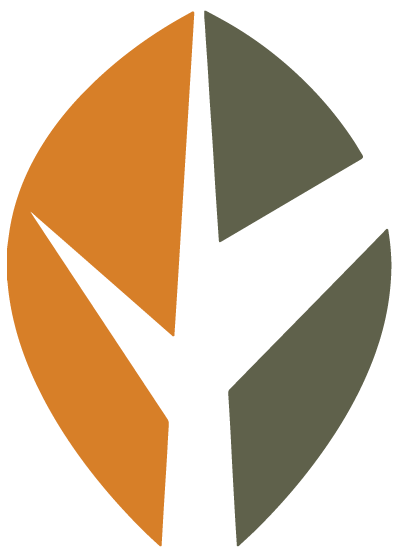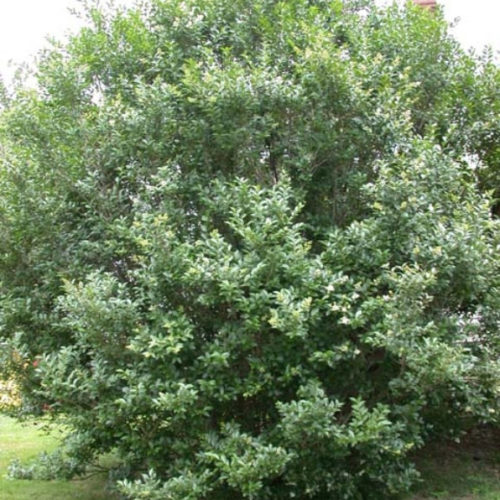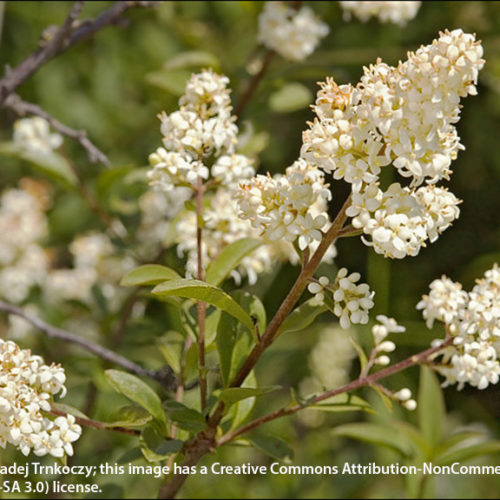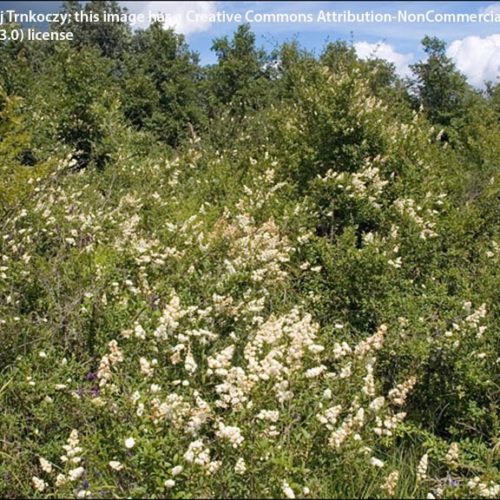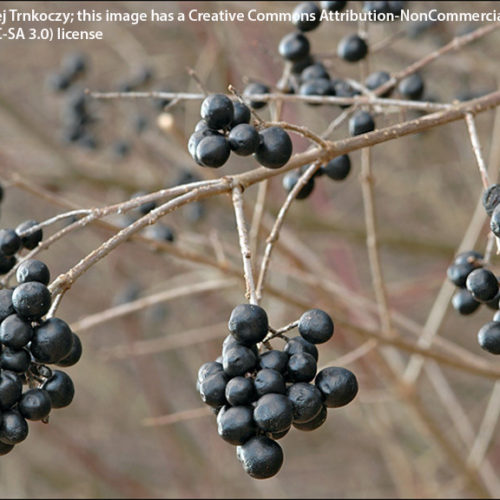Privet, Common and California Privets
Ligustrum vulgare, Lingustrum ovalifolium
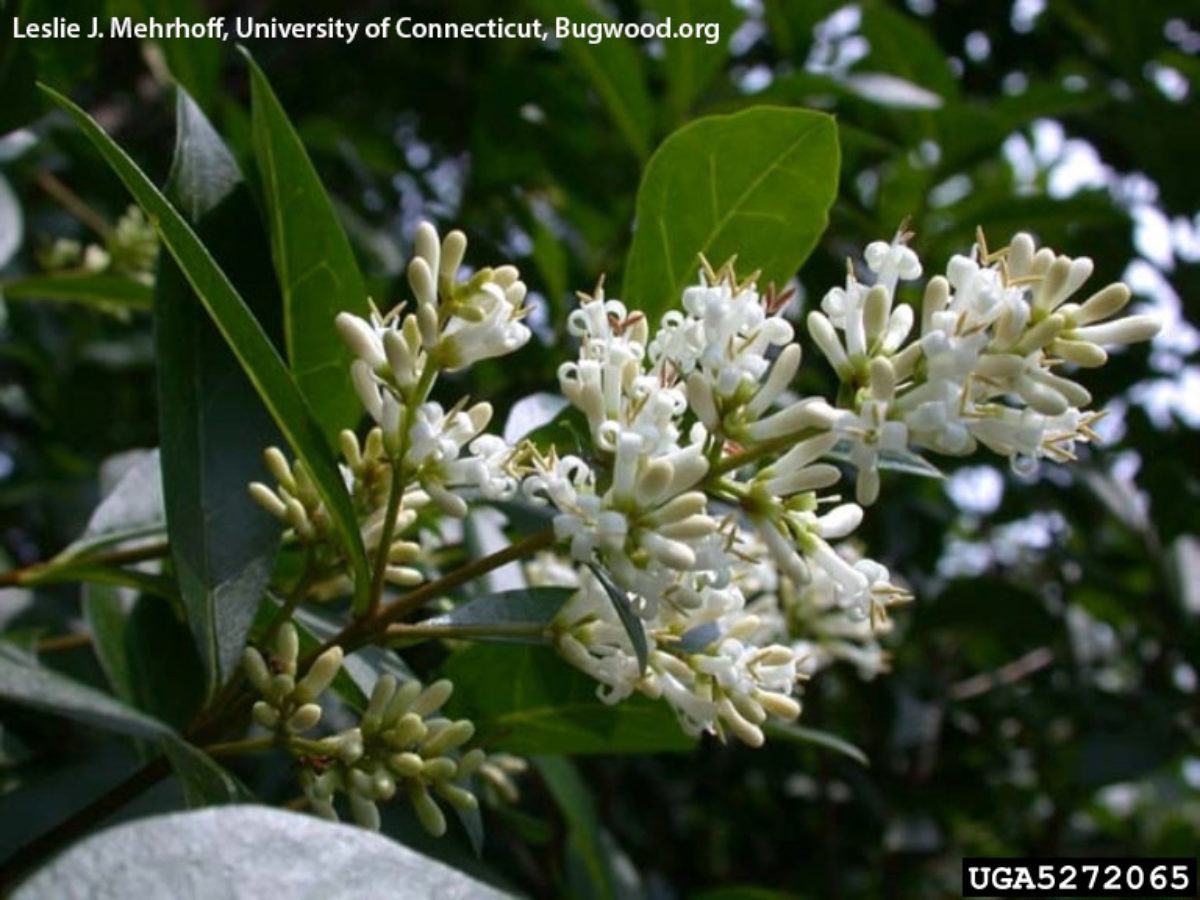
Family: Oleaceae
Other Scientific Names:
Ligustrum insulare, Ligustrum insulense
Other Common Names: European privet, wild privet, privet-hedge, California privet
Weed class: monitor list
Year Listed: 2017
Native to: Parts of Europe, Asia, and north Africa
Is this Weed Toxic?:
humans
Why Is It a Noxious Weed?
This plant is on the monitor list - it is not a listed noxious weed in Washington. Please contact the Noxious Weed Control Board noxiousweeds@agr.wa.gov to report locations or for more information.
How would I identify it?
General Description
Upright to spreading, semi-deciduous shrub growing to up to 9 feet tall though sometimes taller.
Flower Description
Flowers in clusters at branch tips. Each flower white (to , with 4 petals united at base to form a short tube
Leaf description
Leaves are arranged opposite each other on stems. They are 1.2 to 2.4 inches (3-6 cm) long, longer than wide with widest part at middle or above the middle (lanceolate to oblanceolate). Leaves green with smooth margins.
Stem description
New stems growth is densely hair but wears off quickly, becoming hairless or nearly hairless. Young stems green, aging to gray with light gray-brown lenticels.
Fruit Seed Description
Fruit is a berry-like drupe with 2-4 seeds, black,
May Be Confused With
There are other privet species used in landscapes.
Where does it grow?
Disturbed areas, especially areas that were disturbed by human causes, like by machinery. Survives well in sun and mostly shade, like throughout forests.
How Does it Reproduce?
Seed, resprouts from roots
How Do I Control It?
Even consistent mowing and cutting will not kill privet. Removing the entire root is the only mechanical method that is effective, so many land managers prefer to use bulldozers and heavy machinery to control it, even though any amount of soil disturbance highly promotes seed germination. Privet survives and reproduces well after fire, even better than many native plants. Foliar herbicide treatments are recommended for large populations, when there aren't many desired plants growing underneath.
For More Information
UW Herbarium image database information on common privet
Invasive Plant Atlas information on common privet

